Blog
Making Toyama’s winter specialty “KABURA ZUSHI” part3
This is the time to make “Salted Yelloetail (Buri)”.
If you can find “salted yellowtail” in supermarkets, you can skip this process.
We got sliced yellowtail for Sashimi (about 5cm x 3cm x 1cm).
It takes 4-5 days for salting.
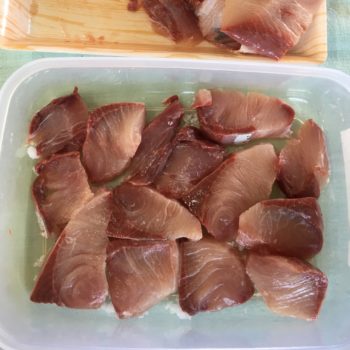
Prepare salt, 10%-weight of yellowtail.
We got 700g of yellowtail, so we used 70g of salt.
Firstly, put a part of salt on the bottom of container and pile up yellowtail and salt alternately like the previous cooking.
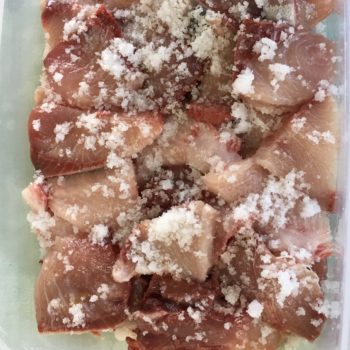
After using up all salt, cover with plastic wrap and put weight stone.
As a just referene, we used 300g of weight stone for 700g of yellowtail.
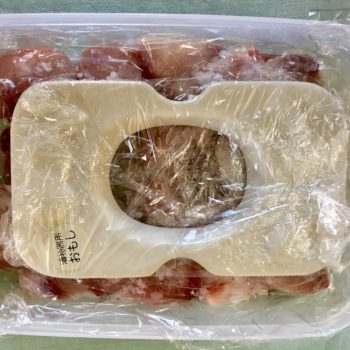
This is kept in refrigerator because it will be warm this weekend in Toyama.
Anyway, keep this below 10℃.
★Schedule★
18th Dec. Prepare radishes. Pickle with salt. →done
20th Dec. Prepare Buri. Pickle with salt. →We have just done it!
24th Dec. Stuff Buri between radishes like sandwich. Soak with Amazake 0.
31st Dec. Ready for eat(●^ー^●)
For next step, don’t forget to prepare Amazake 0.
Making Toyama’s winter specialty “KABURA ZUSHI” part2
Please read the previous article before reading this article.
Making Toyama’s winter specialty “KABURA ZUSHI” part1
Firstly, let’s make turnips or rasish pickles with salt.
Please start this process 2 week before you want to eat.
Salt drives excess water out and makes vegitables soft.
In addition, Salt kills toxic bacteria but cultivates Lactic acid bacteria.
As you know, Lactic acid bacteria brings good effect for our health, and brings mild sour taste and umami.
We use radish instead of turnips, 1.7kg for 3 radishes.
Peel the radish and cut in round slice of 1.5-1.8cm thickness.
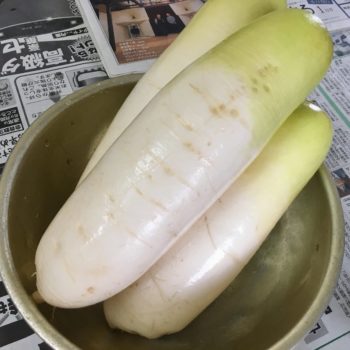
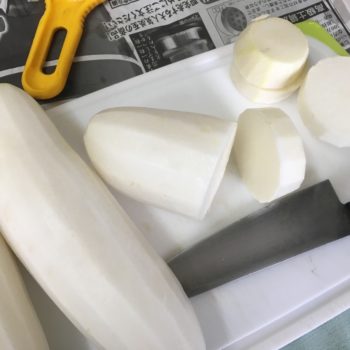
Next, making further cut through radish with about 80% depth.
↓Like this.
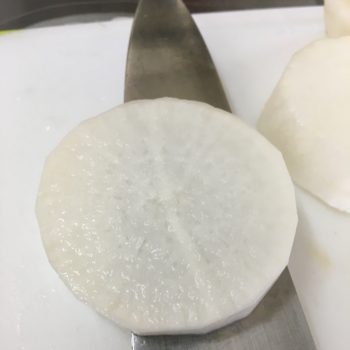
Next, measuring salt, 3%-weight of radish.
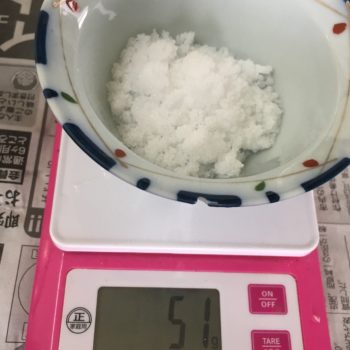
Finally, put radish into the container.
We use miso container for 2kg。
Put salt on the bottom of container.
Then, start putting radishes. Pile up radish and salt alternately.
Pack to its maximum as possible you can to remove air.
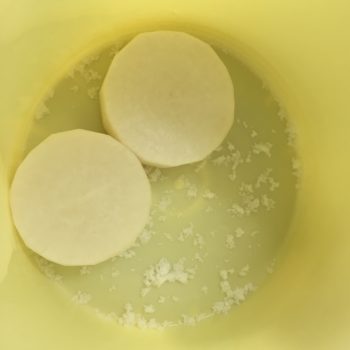
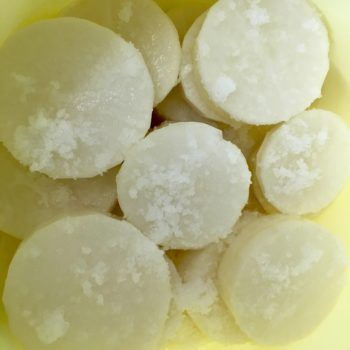
Put all remain salt on the top layer.
Cover with plastic wrap to remove air.
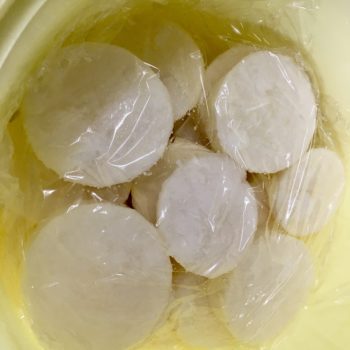
At the end, put a stone weight (we used 4kg of s.w.).
Place the container in the cold (lower than about 10℃) and dark room.
If you like, cover the container with plastic bag to aviod contamination.
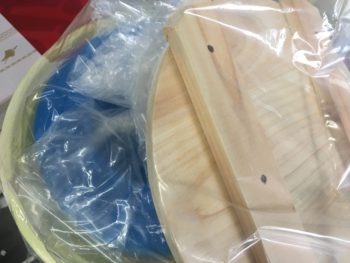
★Schedule★
18th Dec. Prepare radishes. Pickle with salt. →We have just done it!
20th Dec. Prepare Buri. Pickle with salt.
24th Dec. Stuff Buri between radishes like sandwich. Soak with Amazake 0.
31st Dec. Ready for eat(●^ー^●)
I will explain the next step in the following articles.
See you!
Making Toyama’s winter specialty “KABURA ZUSHI” part1
It is already December and we had a lot of snow last week.
Now, we started to prepare “お節料理(OSECHI RYORI)” which special dishes for coming New Year Day.
…Do you think why we started to cook OSECHI though we have still 10 days?
We need to cook a special menu. It is “かぶらずし(KABURA ZUSHI or KABURA SUSHI)”.
KABURA means a turnip and SUSHI means…no need to explain.
This is picture of KABURA SUSHI.
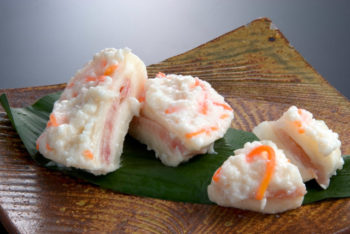
You may think “oh, this is just vegitable, no sushi!”
Look deteil, please.
You can find Toyama’s specialty “Buri (yellowtail fish)” between slices of turnips.
And you can find KABURA SUSHI is coverd with something like white snow.
This is rice, actually malted rice (Kome-Koji).
Koji is important fungi of Japan (wikipedia).
It contains a lot of efficient enzymes and produces nutrients and umami; essential amino acids, vitamins, glucose, peptides, oligosaccharides e.t.c.
KABURA SUSHI is not only delicious because of rich umami and but also healty because of fermentation power.
Depends on areas, a turnip is replaced by a white radish and Buri (yellowtail) is replaced by mackerel or salmon. Every combination is great!
It is said that this food culture was born by farmers
To eat delicious fish (especially Buri) in secret, they stuffed fishes into vegitables.
(If goverment officers find delicious fishes, fishes are all taken away.)
Now, let’s make KABURA SUSHI with Yamagen’s new item “Amazake 0 (Zero)“.
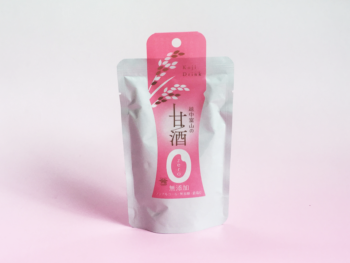
This is Kome-Koji which is ready for using KABURA SUSHI.
Very sweet and a little thick character is best for KABURA SUSHI making.
Furthermore, this contains no addictive, no sweetener and no salt.
Good for your health.
By the way, we use radish instead of turnip this year because we got a lot of radishes from our neighbor!For fish phase, we use Buri (yellowtail) from Himi city, Toyama.
★Schedule★
18th Dec. Prepare radishes. Soak with salt.
20th Dec. Prepare Buri. Soak with salt.
24th Dec. Stuff Buri between radishes like sandwich. Soak with Amazake 0.
31st Dec. Ready for eat(●^ー^●)
I can’t wait for eating this.
I will explain the detail recipes in following articles.
See you!
Harvesting rice for special miso
We have finished to harvest rice for our special miso.
YAMAGEN started to cultivate rice 3 years ago with a rice farmer in Toyama, Mr. Sekino.
He is a polite and honest farmer, taking care of his fields without any day off.
The rice brand we selected is “Toyama original Tenkomori“.
Tenkomori is one of the most delicious rice in Toyama and rated as “Special A” of Japanese rice ranking last year.
We are using this special rice for special miso once-a-year, only on January.
Tenkomori is a late-maturing variety, so this character is perfect for our miso making.
Rice planting started 27th May and rice haevesting started 11th Oct this year.
Today, we will show you how to harvest rice in Sekino field.
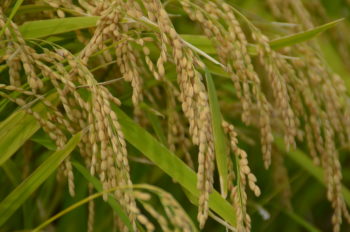
getting heavy rice. very beautiful with still wind.
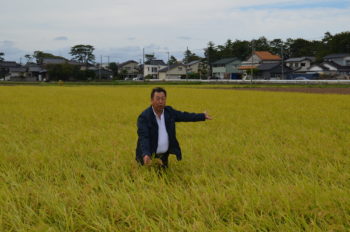
This is our president who loves rice.
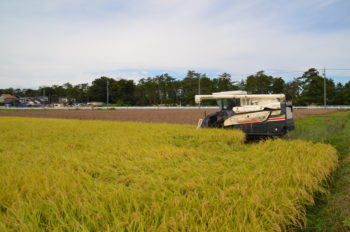
We use the machinery, “combine”. It is similar to harvesting wheat.
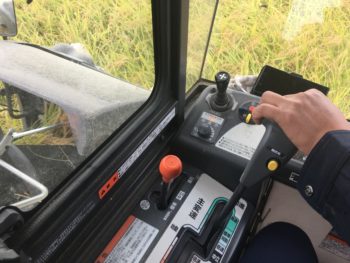
Operating with hands.

The lamp can tell us the volume of rice husk in the tank.
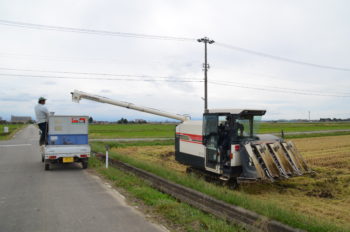
Transfering rice husk to container.
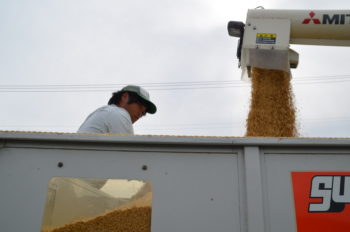
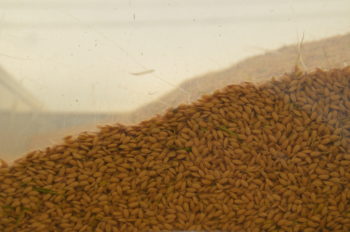
Beautiful gold color.
Looking forward to polishing this rice.
Actually we were afraid of the rice growth this year because Toyama had some typhoons, less sunlight and other strange weather.
Thanks to Mr. Sekino’s hardwork and kindness, we got rice as great as last year.
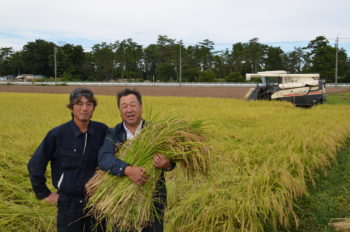
Thank you.
Now, we started to prepare using this rice with the best condition.
■■□―――――――――――――――――――□■■
Check also “special miso” product page.
TENNEN JOUZOU MISO 350g
TENNEN JOUZOU MISO 1.2kg
The challenge of fourteen ~temae miso~
Young internship, just 14 years old, came to Yamagen 2weeks ago.
They are students from Takaoka seibu junior high school.
All junior high school students need to experience the real workplace for 1 week.
This special event of Toyama pref. is called “The challenge of fourteen”.
We accept the local students every year and teach how to tie old-type miso container with rope.
like below.
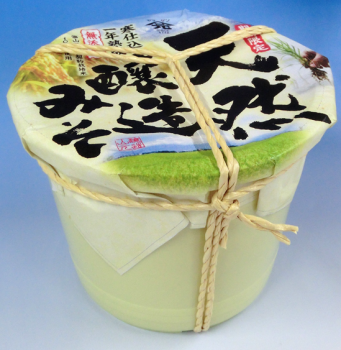
The most attractive event is “Temae-miso experience”.
“Temae” means “making something by oneself”.
Mr. Yamamoto, our factory tief, and Mr. Fujita who makes miso for 10 years are the teachers.
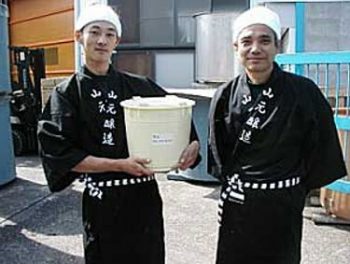
How to make Temae-miso
Mix Koji and salt well
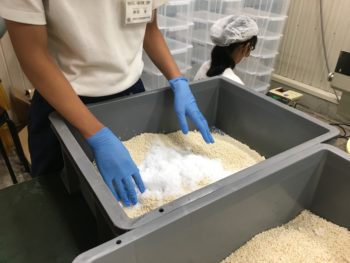
Add boiled-soybeans and its bleed and mix more
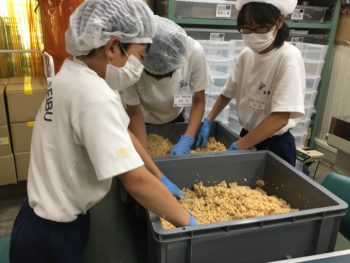
Mix more, the more delicious miso is made.
Pack then in the container with removing air
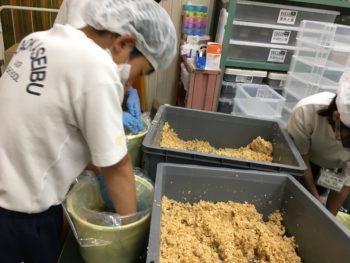
Tying up with rope as you learned!
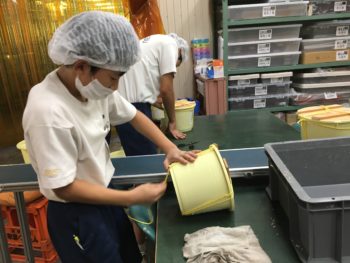
This is 4kg-container, much bigger than normal one (2kg)!
Complete with labeling!
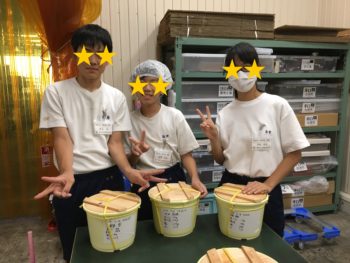
This container was for 4kg, but they achieved about 6kg…! Big work!
Also nice work for tying rope.
These are eatable after 1 month.
We hope they can enjoy this experience and their own “temae miso”:)
On a different note, all 12 year-old students in Toyama experience climbing Mt. Tate (3015m).
Everyone who lives outside Toyama is surprised at this traditional event.
Interestingly, this event is continued from Edo era (1600).
There are a lot of provincial event.
Do your procince have interesting one?

